If you have no idea about the types of dentures and which ones are right for you, this chapter is for you. You can choose from various types of dentures according to your budget and situation. Customizability is one of the best things about dentures. From removable to fixed, full or partial, acrylic, porcelain, or metal, you have a variety of options.
1. Permanent dentures
If you have missing or damaged teeth, dentures can restore your smile. But what about the type of dentures? Permanent dentures are surgically attached to the jawbone to replace missing teeth. They last for years and function like real teeth. They also last longer than other versions because they have implants. They are also known as denture implants and are more successful on the jaw arch. Below is a list of fixed dentures that you can find that can meet your dental needs:
- fixed dentures
- Acrylic fixed dentures
- hybrid fixed denture
- implant-supported dentures
- overdenture
- hybrid denture
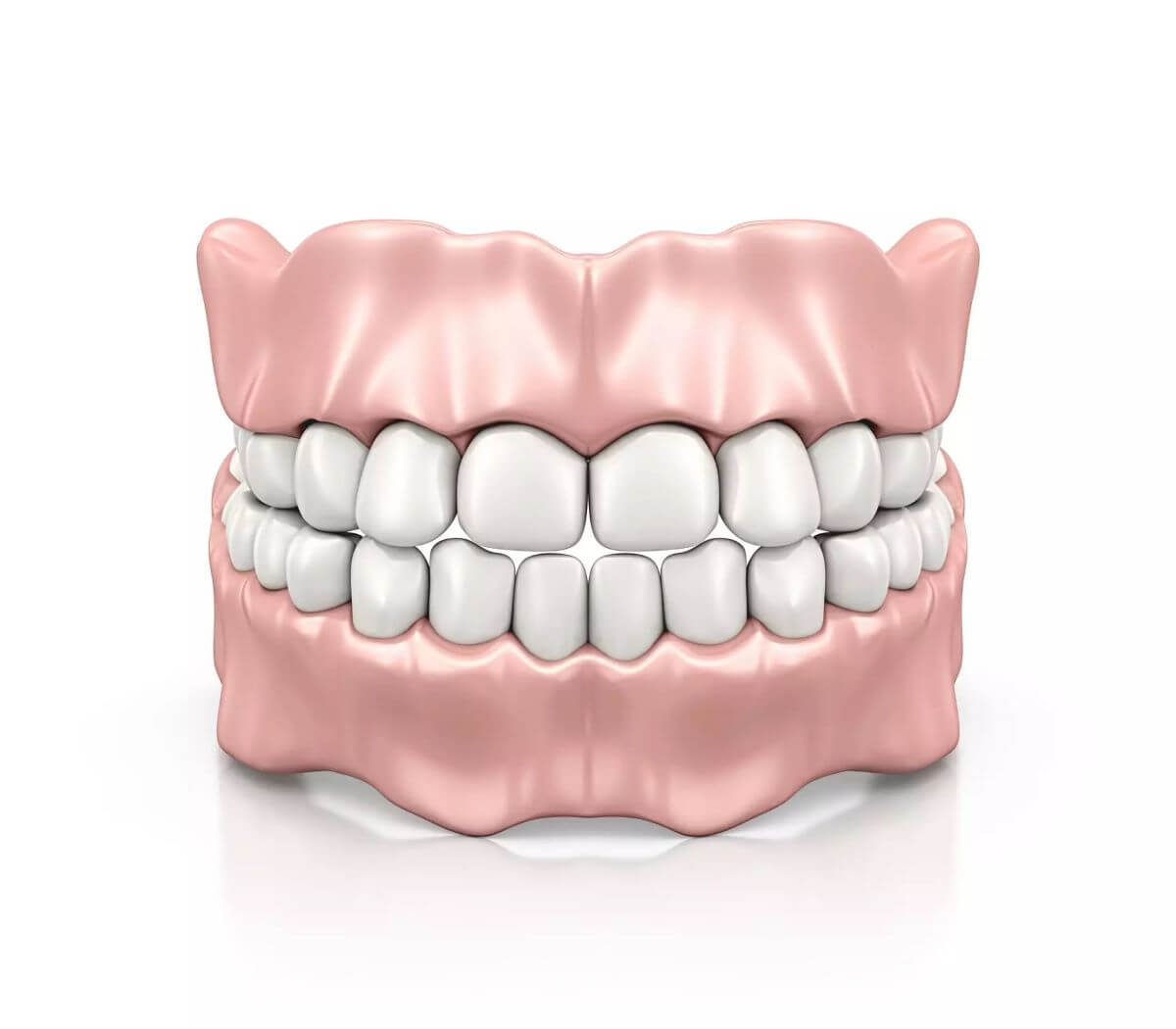
2. Fixed dentures
There are two types of dentures: fixed dentures and flexible dentures. Fixed dentures are the same as permanent dentures in that you cannot remove them. Dentists often use 4 to 6 metal implants to hold them in place in the jawbone. They hold dentures in place so they don’t move and cause adjustment problems.
Some dentists also use denture adhesives to place fixed dentures, although this is not recommended. Dental glue usually destabilizes dentures quickly, and they don’t last more than a few months. Fixed dentures are available for partial and full tooth replacements. The following are the different types of fixed dentures:
1) Acrylic fixed dentures
Acrylic fixed dentures, also known as plastic dentures, are very common these days. They differ from removable acrylics in that they are not removable. Most dental offices will install all-on-4 implants under the dentures to hold them together. Unlike removable acrylics, they’re more practical because you don’t need to remove them. Plus, they’re very affordable and more durable than removable ones.
2) Hybrid fixed denture
Another type of denture that is common today is the hybrid fixed denture. This type of denture also uses a fixed method to hold the denture in place. It provides an all-on-4 implant structure under the jaw to hold the dentures in place. Hybrid dentures use two different types of restorative materials. For example, dentures can be made of acrylic, and implants can be gold or titanium. It is a combination of two materials, so it can be customized.
3) Implant-supported dentures
Removable dentures were the only type of dentures used in the past. Today, with upgraded technology, they offer you a more reliable tooth replacement solution. They can now be fixed and come with durable implants that support them from the roots. Modern dentures are more about bringing your smile from the inside out. Implant-supported dentures last an average of 5 years longer than standard removable dentures.
4) Overdenture
There are many denture options available today. Overdentures are a newer version of removable dentures. They’re a lot like traditional removable dentures, but with implants. Implants provide the backbone that holds dentures together and acts as real teeth. You can also remove the implant posts at any time by connecting them together. In many ways, they are the modern version of traditional removable dentures, but they don’t cover the upper jaw. This also makes them more comfortable to wear.
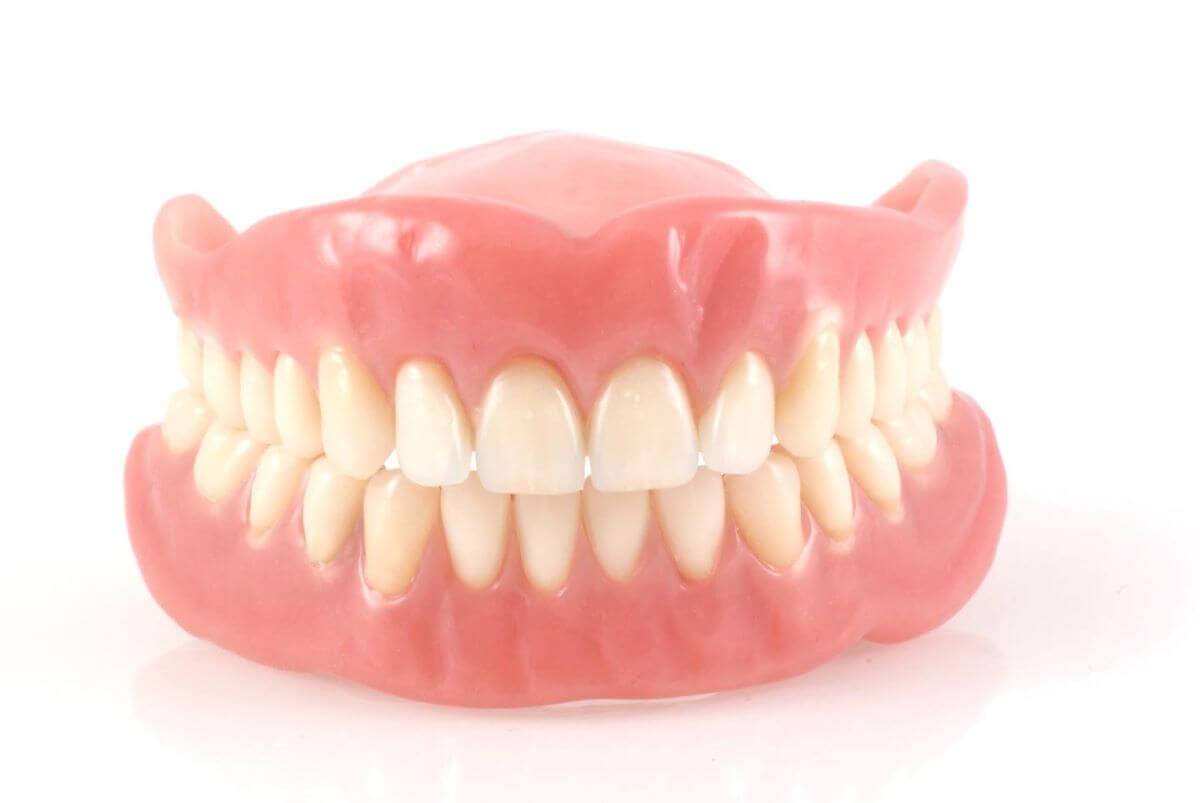
5) Hybrid denture
These are removable types of dentures that are best suited for people who are severely missing teeth. Acrylics are more commonly found in these types of dentures, making them more cost-effective. All-on-4 or all-on-6 implants hold the upper and lower dentures in place. Dentures are made of acrylic, while implant posts are titanium or gold.
3. Removable denture
Also called removable dentures, these types of dentures can be removed when you need them. They are a more traditional type of denture without implant support. Their aim is to replace missing teeth and, more importantly, enable patients to eat and talk like before. It is more common for this type of denture to be made of acrylic, which can be customized. They can also be used as off-the-shelf dentures, but they don’t fit as well. Improper installation can lead to many dental problems such as gum pain, bone loss and more. Below is a list of removable dentures for different dental situations:
- Partial Dentures (Removable Partial Dentures)
- removable dentures
- economical dentures
1) Partial Dentures (Removable Partial Dentures)
Removable partial dentures are dentures that hold false dental bridges together. The procedure replaced more than one missing tooth at a time. It is held in place by a metal buckle and the denture can be removed. You can find them in acrylic, porcelain, or composite. A resin material resembling gum is used for the base. It must be worn at least 7 to 8 hours a day and removed before going to bed.
2) Removable dentures
These dentures have several advantages. Unlike traditional dentures, these do not contain metal buckles for fastening. The main material of the denture base is nylon or thin thermoplastic. As a result of the soft base, they are comfortable to wear. They don’t feel tight and are easy to remove. They are also great for people with acrylic allergies.
3) Economical dentures
They are one of the most affordable types of dentures. Economy dentures are regular dentures that can be fitted in one dental session. They come in only one standard color and shape, so customization isn’t possible with these dentures. They may be affordable, but since they are not customizable, they do not fit well and cause many dental problems.
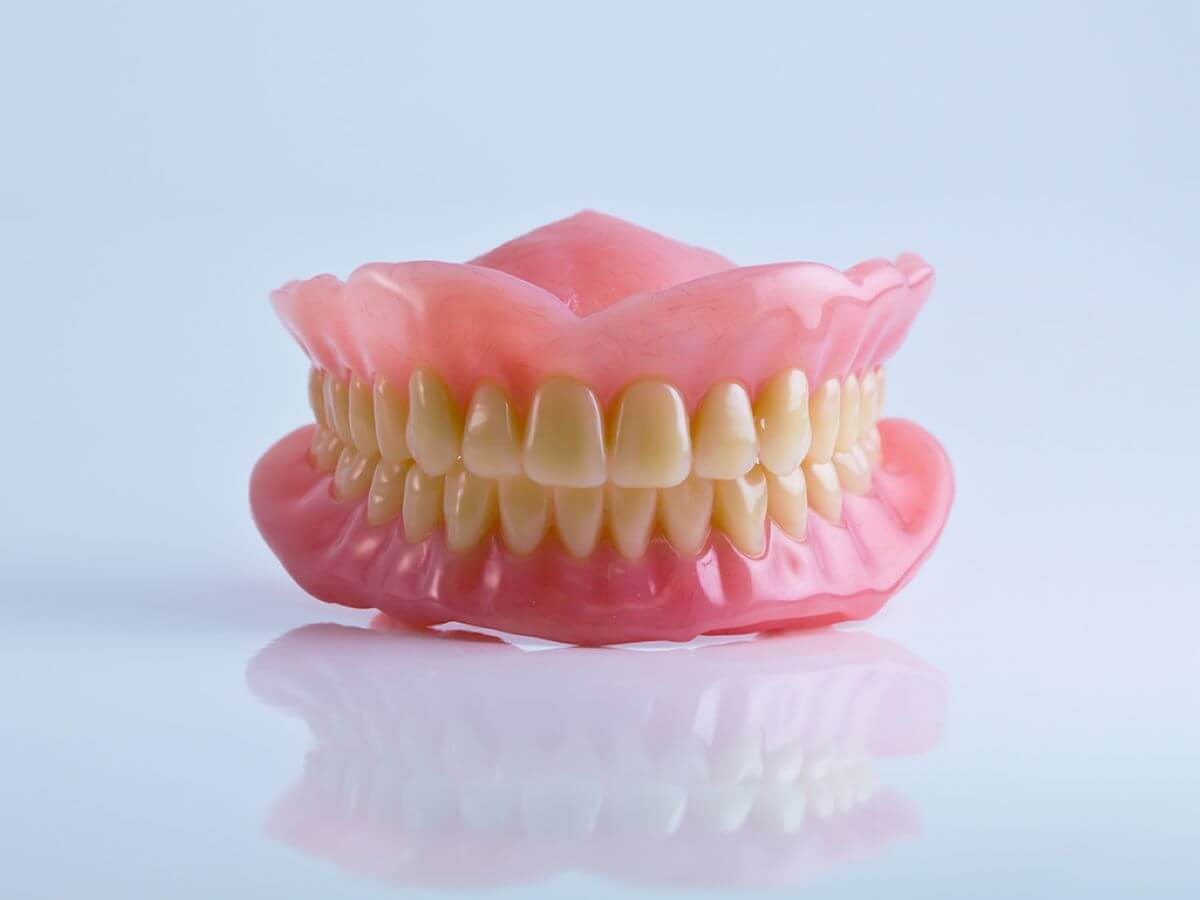
4. Temporary dentures
Also known as immediate dentures, dentists temporarily place them after tooth extractions. They are only worn for a limited time until the final dentures arrive. They are off-the-shelf dentures, which is why they may not fit you well and move a lot. Continued movement may trigger the gag reflex, making you uncomfortable. Before the final dentures arrive, they are usually worn for six months.
- removable denture
- removable partial dentures
- temporary removable denture
- Temporary removable partial dentures
- immediate denture
1) Removable denture
They are removable partial or complete dentures. The complete one comes with a base made of nylon, metal or acrylic that sticks to your palate. Today, you can also find snap-on full removable dentures. They’re easier to use and don’t move around, which means you don’t have to keep them in place over and over again. Your oral health can deteriorate if you don’t clean your mouth and dentures adequately. We also recommend that you do not wear it for more than 8 hours and remove it before going to bed.
removable partial dentures
This type of denture can help if you are missing two or more teeth in a row. They can restore your smile and improve the beauty of your smile. Dentures have metal clasps at the bottom of the gums that secure them to the top of the socket. Some partial dentures don’t have a metal frame and look completely natural. They have something called “precision attachments” that hold dentures in place.
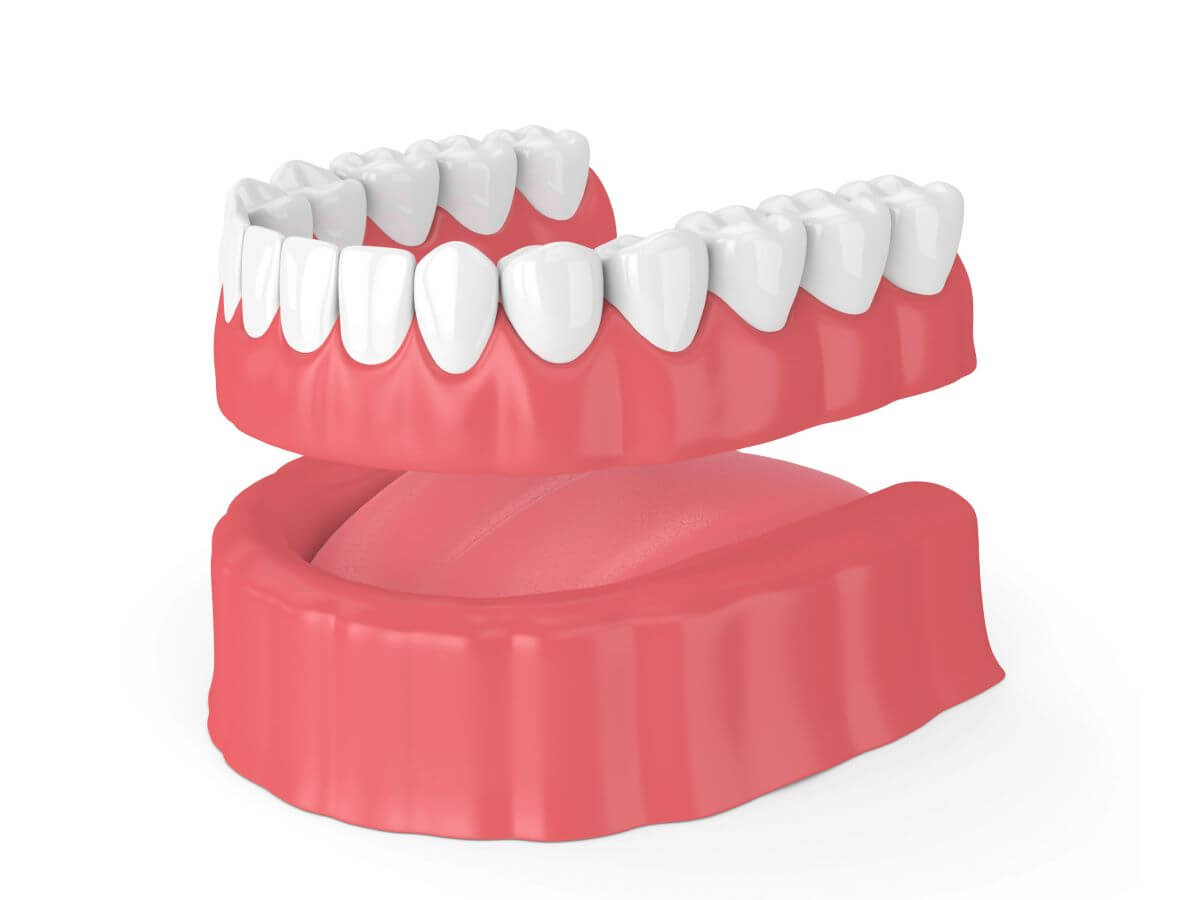
2) Temporary removable denture
They are removable dentures that your dentist gives you after tooth extraction. They are only for temporary use until you get your last set of dentures. They are provided only so that you can eat, talk and smile without hindrance. They can also help your gums heal while you wait for your permanent dentures. They come in different materials, the most common being nylon, acrylic, and metal. They stick to your roof naturally, but you may need denture adhesive if you have a dry mouth.
3) Temporary removable partial dentures
As the name suggests, it works on parts of teeth rather than all teeth. If you’re only missing a few teeth, your dentist recommends getting them. They are your temporary partial teeth until your final dentures are fitted. They consist of an easy-to-use metal frame that allows the dentures to be removed and fitted when needed. Your dentist will usually ask you to wear these dentures for at least 3 to 6 months until you receive your final dentures.
4) Temporary fixed denture
These are also used temporarily until your final dentures arrive. They are temporarily attached to your chin so you can eat, talk and smile without any problems. While it takes a while for your jaw to get used to them, you’ll eventually learn to work with them. Dentists use adhesive to hold them in place so they last until you’re ready for your final dentures. They are not custom-made, so we do not recommend wearing them for longer than necessary.
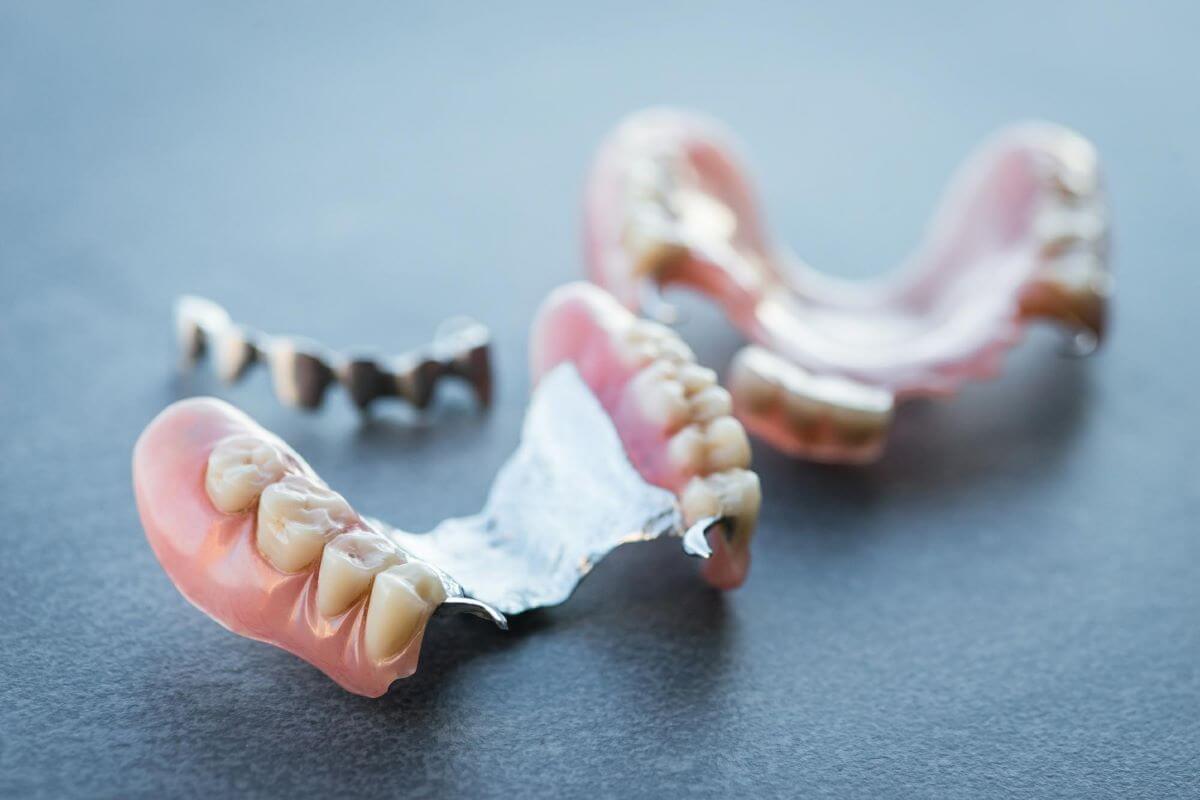
5) Temporary partial fixed dentures
These are temporary dentures where some missing or damaged teeth need to be replaced. Dentist adhesives are used by dentists to temporarily place teeth after they have been extracted. They are required for the function of the teeth until new and final dentures are ready. Their measurements are not ideal because they are readily available and only available temporarily. We do not recommend that you wear it for longer than your dentist recommends.
6) Immediate denture
They are off-the-shelf dentures that your dentist places right after a tooth is extracted. They don’t require customization as they are generic. There is no wait time for this type of denture, so you won’t need more than one dental appointment. They are suitable for temporary use only – no more than 6 months. In most cases, they are detachable and come with a metal frame to detach and attach them. Dental intervention is required if you want to continue wearing them as dentures of last resort.
5. Denture Material Type
In this day and age, you can find a wide variety of denture materials. Gone are the days when the only material available was acrylic. From acrylic to porcelain to nylon, porcelain, and composites, you have a variety of options today. Below is a comprehensive list of denture materials and what each is used for:
- Acrylic Dentures
- porcelain dentures
- nylon dentures
- Acrylic Dentures
- composite denture
- titanium dentures
1) Acrylic Dentures
Dentures made from this material are among the oldest available. Acrylic is an easy-to-mold plastic that can make it look like real teeth. The entire prosthesis, from teeth to gums, is made of acrylic. It is the most popular choice for dentures because they are less expensive than other materials. The biggest downside to getting acrylic dentures is that they don’t look as natural as porcelain or composite. They also don’t last as long, since acrylic tends to degrade faster. Additionally, many people are also allergic to acrylic, so it’s best to discuss this with your dentist beforehand.
2) Porcelain dentures
These dentures are popular for offering the most natural looking aesthetic. Porcelain is a hybrid of ceramic and glass that provides the most realistic restorations. It is much harder than other materials, so it can withstand high bite forces. It is not suitable for people with severe bone loss as it puts more pressure on the jaw and gums. They’re a bit more expensive because they’re more durable and have the most natural-looking results. This combination is hard to find with other denture materials.
3) Nylon dentures
These dentures are popular for their sleek and slim design. Nylon and thermoplastics are the main ingredients used to make the base. Unlike acrylic or metal dentures, these dentures are not as heavy. Because they’re nylon, they’re very flexible and don’t feel tight against your gums. They are suitable for a partial replacement and blend well with the rest of your teeth. They can be a bit more expensive due to their utilitarian design.
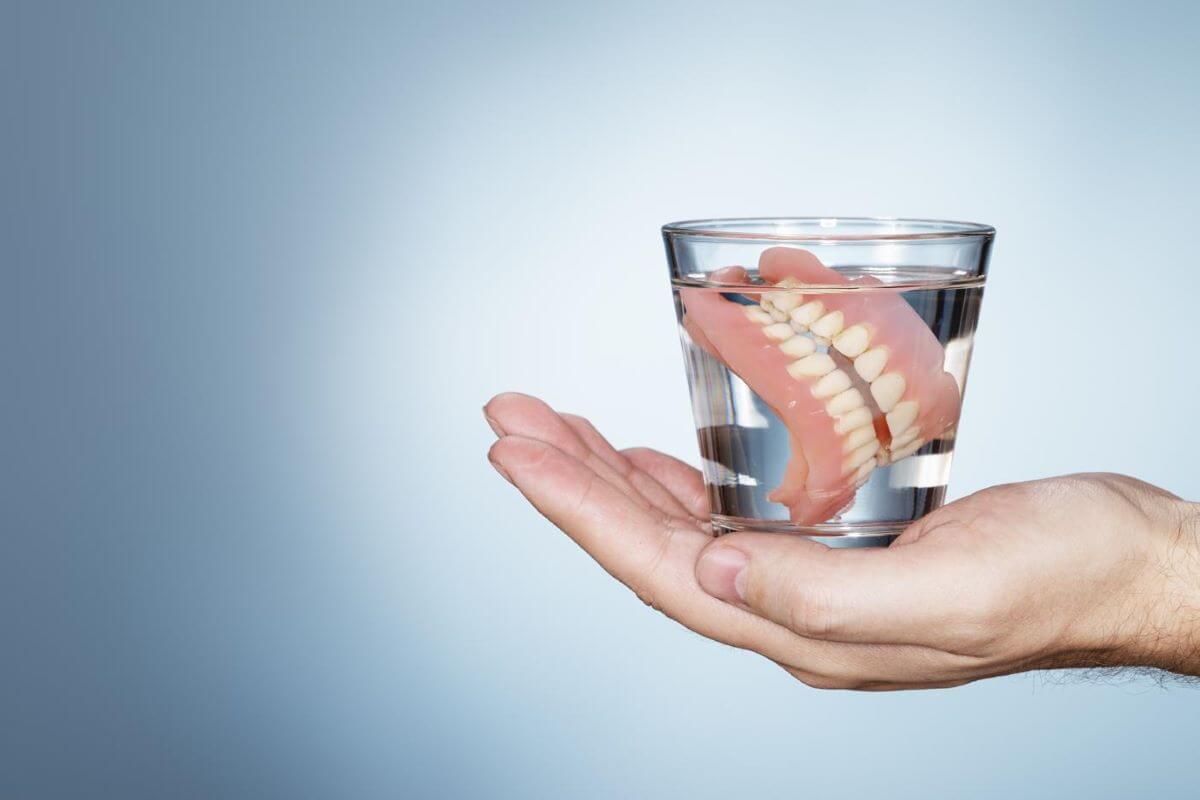
4) Acrylic resin denture
This is an acrylic denture with a base made of resin, more commonly known as poly(methyl methacrylate). They are more suitable when someone needs an artificial gum line. Making realistic gums is easier with acrylics. They are cost-effective and don’t take long to prepare. Studies also show that patients face fewer adjustment complications. Since resin can be stiff for the jaw, gum problems, bone loss, and gag reflex are more likely.
5) Composite denture
This is another affordable option for patients missing several or most of their teeth. They offer artificial teeth made in whole or in part from composite materials. They have a metal frame at the base and are slightly smaller than acrylic dentures. Metal frames can cause problems for the gums and alveolar bone in the long run.
6) Titanium dentures
These dentures come with a strong but thin frame. The base is made of 100% titanium and holds the denture together. They are better suited for removable dentures because metal is rigid to the jawbone. The great advantage of titanium dentures is that they are biocompatible and non-allergic. Therefore, anyone can get them without worrying about a possible allergic reaction. Since metal is a bit stiff for your jawbones, it may not be suitable for people with severe bone loss.
6. How long do dentures last?
We cannot give you an exact answer because the lifespan of a denture depends on its material and quality. The following table lists the average lifespan of each denture according to denture type:
| denture material | Denture type | average minimum duration | Average longest duration |
| acrylic fiber | full dentures | 3 years | 5 years |
| acrylic fiber | partial denture | 2 years | 3 years |
| porcelain dentures | full dentures | 5 years | 10 years |
| porcelain dentures | partial denture | 10 years | 15 years |
| metal dentures | full dentures | 3 years | 5 years |
| metal dentures | partial denture | 5 years | 10 years |
| Nylon/Flexible Dentures | full dentures | 1 year | 3 years |
| Nylon/Flexible Dentures | partial denture | 3 years | 5 years |
1) Which dentures are more durable?
The average lifespan of a full denture is 5 to 10 years, while a partial denture lasts at least 15 years. In contrast, porcelain dentures are more durable than acrylic dentures because they are stronger. They are more shock-absorbing and wear down more slowly than acrylic dentures. Therefore, acrylic degrades much earlier than porcelain. The lifespan of your dentures also depends on how well you take care of them. If you neglect your oral health and don’t visit your dentist for regular checkups, your dentures may deteriorate faster.

2) What are dentures made of?
The most common materials for dentures are plastic (usually acrylic) or porcelain.
Porcelain has a translucent appearance similar to natural teeth. They can be made to match your teeth. They may be a better option in some cases, such as when complete dentures are required. However, porcelain as a material should be considered to be heavy when making this decision. So it might not be an option for everyone. They are also more fragile than resins. Due to its hard construction, it may crack and chip. They can also break your natural teeth, so they need to be handled with more care.
On the other hand, those made of acrylic are more prone to wear and tear, although they are less likely to crack and break. They’re also cheaper, and their bases are easier to install and adjust. Since it’s not as hard as porcelain, it’s more comfortable and better suited for bridges.
Dentures made of acrylic or porcelain require a base. This is called a plate. The board can be made from plastics such as polyester and acrylic, or metals such as chrome and cobalt. Acrylics are known for their ability to better mimic the structure of natural gums. They usually have artificial gingival borders. Metal ones, on the other hand, fit better and are better suited for partial dentures.





Leave A Comment